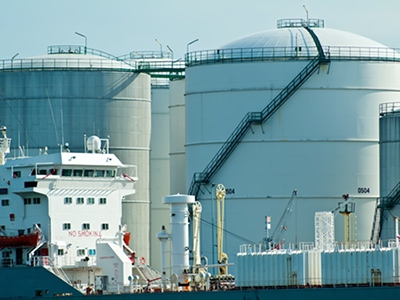Clarification is being sought for steam turbine LNG carriers in North and Baltic
| IGC Code update |
| Subject to some editorial clarifications, the draft revised International Gas Carrier (IGC) Code is scheduled for adoption at MSC 93 in May 2014, with a corresponding entry-into-force date of January 2016. The revised IGC Code will not be retroactive, and will apply only to vessels built after the entry-into-force date. |
| IGF Code update |
|
Development of the International Code for Ships using Gas or other Low Flash-Point Fuels (IGF Code) continues to be progressed via correspondence group (CG). The primary focus of the CG remains the use of LNG as marine fuel, and although the CG is also addressing methyl alcohol and lowflash diesel fuels, that work will not delay the Code. Recent IMO sub-committee work has looked at the location of LNG bunker tanks (Ship Design & Construction Sub-committee) and STCW training requirements (Human Element, Training & Watchkeeping Sub-committee). Realistically, the IGF Code is at least 12 months behind the IGC Code, as the drafting group is not scheduled to meet until September 2014. IMO appears to be looking to fast track the IGF Code, with a target adoption date of spring 2015 and a resulting entry-into-force date sometime in the first half 2017. Once the work on the three fuels listed above is complete, other fuels such as LPG will be addressed. |
| EEDI for gas carriers |
| As reported in the last newsletter, amendments to MARPOL Annex VI were approved at the 65th Session of IMOs Marine Environment Protection Committee (MEPC65) in May 2013, to require LNG carriers with a non-conventional propulsion type to comply with the EEDI regime. The entry-into-force date for these amendments is January 2016. Calculation and certification guidelines for implementation of these amendments will be considered at the next session of MEPC, in April 2014. On a related note, SIGTTO Technical Adviser Rick Boudiette will be presenting a paper on Gas Carrier EEDI at Gastech 2014 in March. |
| MARPOL Annex VI / Regulation 4 (Sulphur Equivalency) |
| The SIGTTO Secretariat, working with several members, is engaging the European Maritime Safety Agency (EMSA), the EU Committee on Safe Seas and the Prevention of Pollution from Ships (COSS) and IMO flag administrations, as well as various EU member states, in an attempt to clarify the application of MARPOL Annex VI, Regulation 4, for steam-propelled LNG carriers transiting the North Sea and Baltic Sea sulphur emission control areas (SECAs). The goal is to obtain EU agreement for using the EU Fuels Directive (for ships in port and at berth) alternative compliance method within the SECA zones. This would allow steampropelled vessels to operate in dual fuel mode (boil-off gas and fuel oil) within the SECAs and preclude extensive modifications such as a separate distillate fuel systems and burner management modifications. |
Source: SIGTTO
The purpose of the Society is to promote shipping and terminal operations for liquefied gases which are safe, environmentally responsible and reliable. To fulfil this mission it will:
- Proactively develop best operating practices and guideline
- Sustain a learning environment by sharing lessons learned
- Promote training and development of all within the industry
- Foster mutually beneficial relationships with regulatory authorities and other stakeholders
- Conduct its business with professionalism and integrity
Learn more at official webiste www.sigtto.org































































